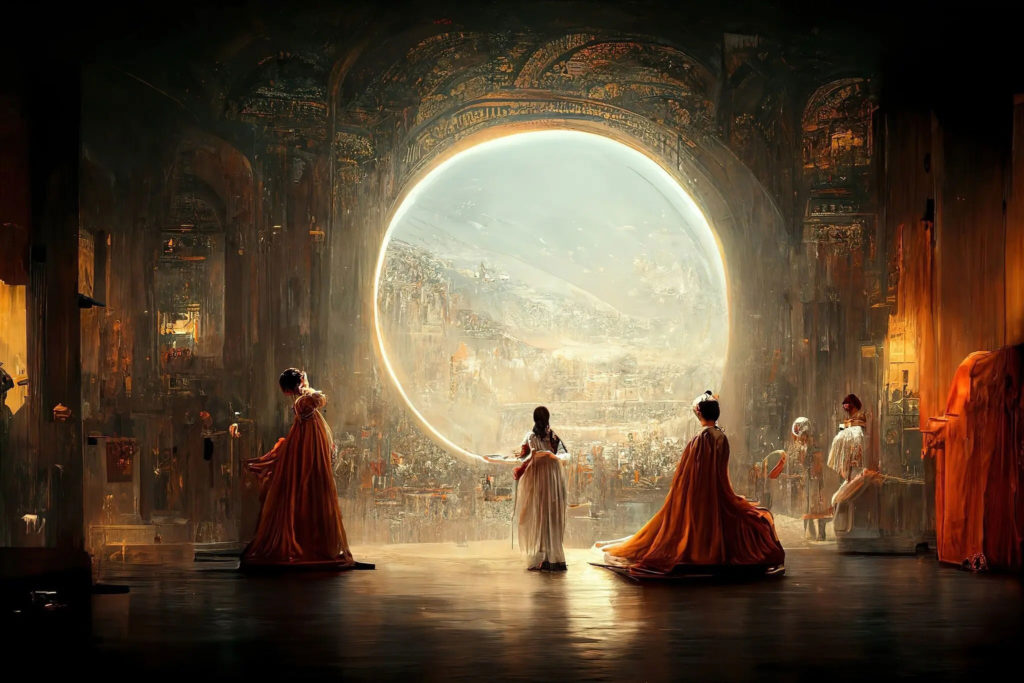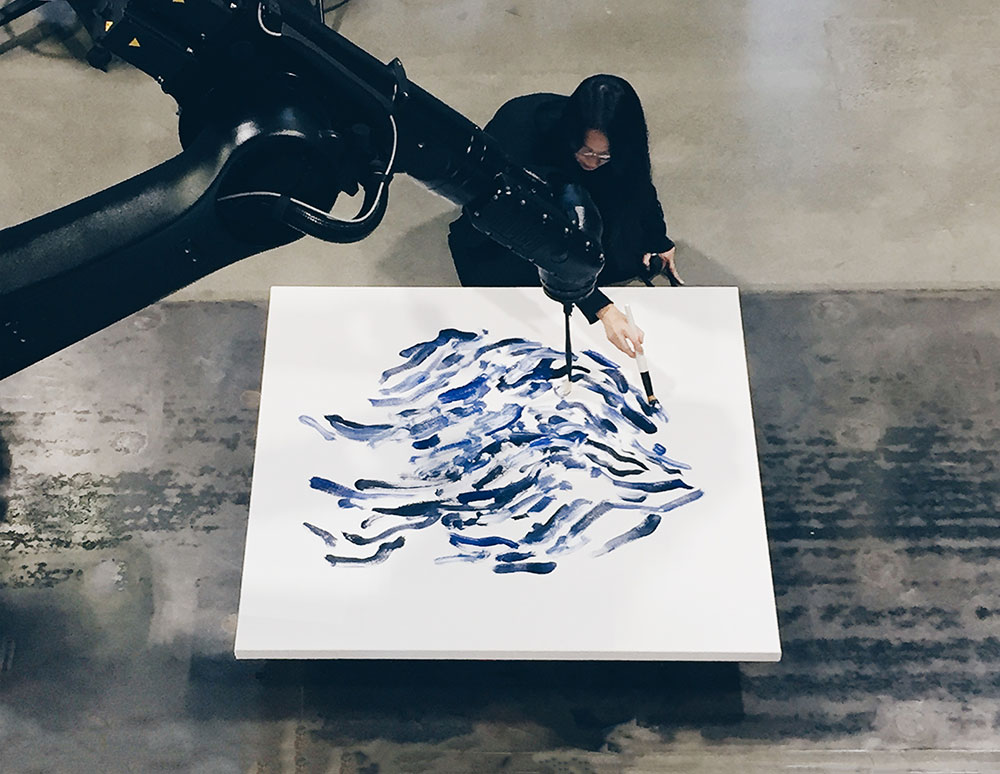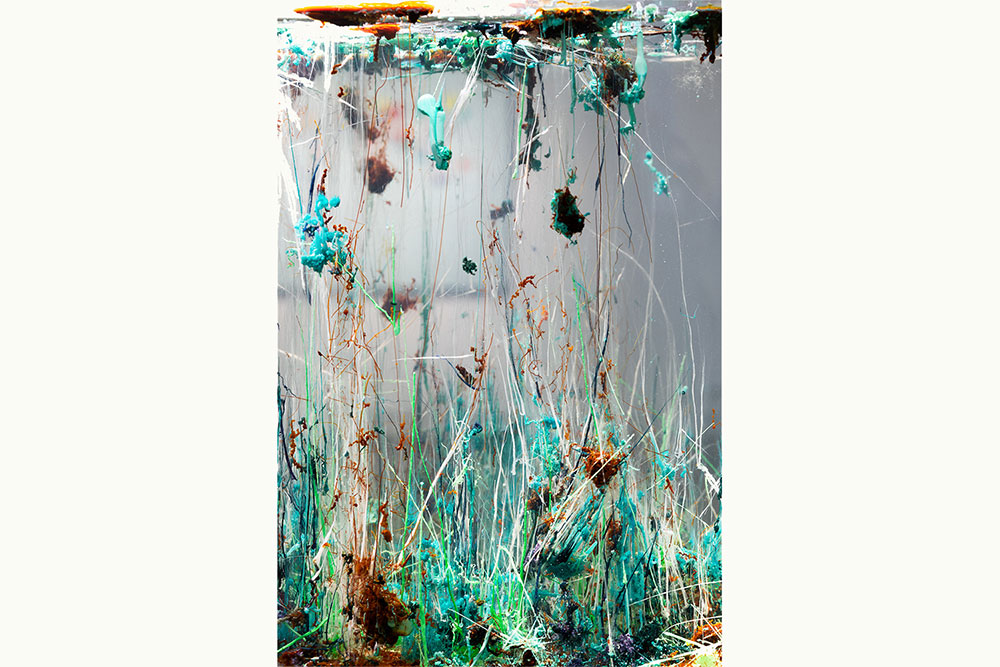Art is dead, dude. It’s over. A.I. won. Humans lost.” That’s what Colorado State Fair’s annual art competition winner Jason Allen told The New York Times this fall after his work, “Theatre D’opera Spatial,” took home the top prize—a highly controversial win because Allen’s work was created with Midjourney, an artificial intelligence program that turns lines of text into hyper-realistic graphics.
It’s a dramatic sentiment but it’s one of many instances lately of the emergence of artificial intelligence (AI) in art. Newly released tools boast the best capabilities yet and while they offer exciting capabilities that could usher in new techniques and styles of art, they also come with some trepidation. If anyone can generate art for themselves, will demand for artist-created work still exist? And where is the ethical line between borrowing ideas and high-tech plagiarism?
Ultimately, experts seem to agree that AI is more likely to become a collaborative tool for creatives, rather than a competitor. But as evidenced from other industries, AI will almost certainly have a lasting impact on the art community, too.

The Possibilities are Endless
AI-generated art has been around for years, but newly released tools have further democratized art by allowing anyone to create complex and realistic works simply by giving the AI tools a few well-chosen prompts.
Undoubtedly, AI tools are having a major impact on the art world. For example, they allow artists to create more complex and intricate works than ever. They are also helping artists to experiment with new styles and techniques.
KBAA graphics director Liz Schnurstein says her team currently uses AI tools for composition inspiration to play around with an initial idea or concept, but stresses it’s just for internal use and not for selling a completed art piece to a client.
“It’s currently very fun to experiment with,” she says. “The technology can create mind-blowing results.”
For many artists, however, the excitement is tinged with worry: Could these tools possibly put their livelihoods at risk? For example, Shutterstock recently made a deal with OpenAI to integrate AI tool Dall-E into its product. However, digital artist Noah Bradley recently told Wired magazine that, although artwork for some mediums might face competition, he believes the impact will be similar to the effect of smartphones on photography—making it more accessible, but still requiring a professional touch to create powerful and complex images.
Schnurstein agrees. “I think AI could potentially replace some design jobs in the field, however artists will evolve with the new tools and learn to use them to their advantage,” she says. “If we could license the imagery it’s using to create the AI art, this could be a great jumping-off point tool for artists to further modify and enhance the work that we do.
“I think people love the human element of the artwork and connecting with the background of the artists, as we see with our client base. If computers made all of the artwork, there would be less of a story behind the creations, and this would affect how people feel about the pieces, which is a big part of why people love artwork to begin with.”

Copyright Concerns
Although AI has many exciting possibilities when it comes to art, it also has one big concern that must be resolved before it can become truly viable: copyright issues. Because the AI has been trained on billions of images, some of those are copyrighted works by artists, causing outrage from artists who consider this to be theft of their artistic trademark. In fact, three female artists recently filed a class action lawsuit in the US against several AI companies, charging them with theft of creative ideas. Artist collective Spawning even built a tool called Have I Been Trained? to help artists discover if their works are being used to train AI tools, and potentially opt out of being used in future training.
“These companies have now set a precedent that you use everyone’s copyrighted and private data without anyone even opting in,” says Karla Ortiz, an illustrator and board member of Concept Art Association (CAA) to The Guardian. “Then they say: ‘We can’t do anything about it, the genie’s out of the bottle!’”
CAA has met with government officials to talk about copyright law and works with Washington lobbyists to create awareness of the industry-wide issue.
A critical part of KBAA’s work involves remaining vigilant about potential copyright concerns and providing proper credit to artists, and as AI continues to transform more industries, remaining committed to that practice will continue.

Although it’s too early to know what the effect will ultimately be, the fear that artistic AI tools will displace artists and creative professionals seems to be unlikely. Instead, the new possibilities these tools offer could usher in new styles of art, just as new mediums have done for centuries in the art world.
Interested in discussing the latest trends in art and hospitality? We’re ready to dive in.
